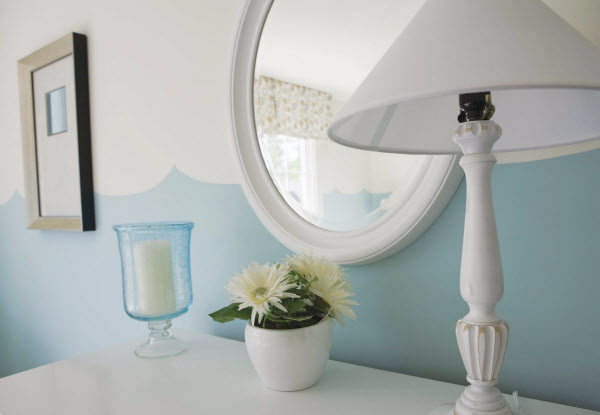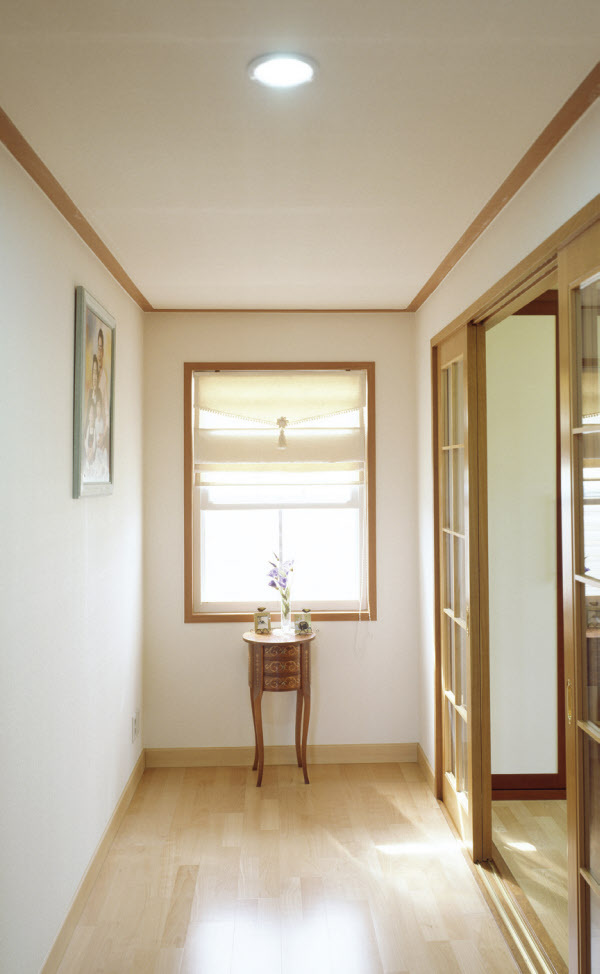Although “pungsu jiri,” a Korean version of Chinese feng shui that concerns correlation between life-force energy and its surroundings, is often regarded as superstitious, the idea is often reflected in the interior design of many Korean residences.
The practice of integrating this intricate art of geomancy with housing, at the macro level, is usually done by building one’s home on an auspicious site to bring peace and luck. But it doesn’t always have to be complicated, as there are simple ways to improve one’s interior space just by placing certain objects in different positions around one’s house or using some specific colors for decoration. Basically, it’s a practice based on the idea that our homes are a mirror of what’s happening inside us, says US feng shui expert Catherine Brophy.
 |
(EGA) |
According to pungsu jiri experts, the front door is the most crucial part in the house as it is thought to be where “gi” -- the fundamental life force that flows through all and everything -- gets in. They advise people to minimize clutter around it to keep it wide open and let in all good energy. Clear the entranceway of piles of shoes, magazines, newspapers or boxes. No squeaky door hinges and no overgrown greens. As “brightness” matters in pungsu-jiri decoration, it is also advisable to use a bright lighting for the front door and place bright colored shoes high on a shoe self.
Another important step is to declutter one’s home. As the aim of pungsu jiri is to create a space where energy can calmly flow, placing unnecessary objects that can block the energy flow should be avoided. Regarding furnishings, one shouldn’t run into the back of the sofa or a dresser once entering a room, while some experts also suggest having a round table with no sharp edges and a decor that features earth tones in the kitchen, a symbol of health and wellness. In the kitchen, where the two opposite energies of water and fire coexist, it is also advisable to set oven and microwave, which are fire materials, apart from fridge and sink, which are related to water. In the same context, keeping distance between a water purifier and a gas stove is another example.
 |
(EGA) |
While mirrors are considered to recirculate energy and enhance natural light, experts say placing them on the opposite side of the front door can distract the positive energy flow and drive it out of the house once the door is opened. As mirrors also facilitate the smooth flow of the energy, it is recommended to place them in locations that are susceptible to bad smell and ventilation, such as the kitchen or bathroom.
Colors and pungsu-jiri are also tightly associated, according to Jeon ang-soo, head of the Korean Pungsu jiri Research Institution.
The color red, which represents the element of fire, is considered a lucky color in pungsu jiri.
“Placing a red-colored painting around corners, at the end of a corridor or on the wall of a living room that faces the front door helps circulate energy,” he said.
As yellow represents the energy of rich soil and wealth, Jeon advised using yellow elements such as cushions or filling a child’s room with the color for emotional stability and to improve learning efficiency. Green represents balance, healing, growth, freshness and abundance; the color is good for the dining area.
(
lotus@heraldcorp.com)








![[Today’s K-pop] Blackpink’s Jennie, Lisa invited to Coachella as solo acts](http://res.heraldm.com/phpwas/restmb_idxmake.php?idx=644&simg=/content/image/2024/11/21/20241121050099_0.jpg)
